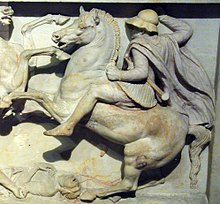Nukedog wrote:Must mean sustained winds. Iirc Katrina was like 90-110 with gusts of 160
A Cat 5 Hurricane is like a seemingly unending explosive shockwave.
Nukedog wrote:Must mean sustained winds. Iirc Katrina was like 90-110 with gusts of 160





Storm damage numbers need to be adjusted for inflation. A cat 5 a century ago did a lot more damage than one today. Still bad, but apples to apples comparisons don't take into account any of the changes that have occurred over time. Loss of life and property damage are a lot lower than they used to be. Earthquakes and fires are the same.GloryofGreece wrote:Was it category 4 in that bad one around the turn of the century that landed around Galveston Texas? Brutal and fairly modern times.
The Great Galveston Hurricane[1], known regionally as the Great Storm of 1900 [2][3][4], was a Category 4 storm, with winds of up to 145 mph (233 km/h), which made landfall on September 8, 1900, in Galveston, Texas, in the United States. It killed 6,000 to 12,000 people, making it the deadliest natural disaster in U.S. history.
GrumpyCatFace wrote:Dumb slut partied too hard and woke up in a weird house. Ran out the door, weeping for her failed life choices, concerned townsfolk notes her appearance and alerted the fuzz.
viewtopic.php?p=60751#p60751
Property damage is higher these days, more shit to destroy. So if it needs to be adjusted for inflation, it's the other way around. Death tolls are higher back in the day, due to less advanced warning that it's coming.Okeefenokee wrote:Storm damage numbers need to be adjusted for inflation. A cat 5 a century ago did a lot more damage than one today. Still bad, but apples to apples comparisons don't take into account any of the changes that have occurred over time. Loss of life and property damage are a lot lower than they used to be. Earthquakes and fires are the same.GloryofGreece wrote:Was it category 4 in that bad one around the turn of the century that landed around Galveston Texas? Brutal and fairly modern times.
The Great Galveston Hurricane[1], known regionally as the Great Storm of 1900 [2][3][4], was a Category 4 storm, with winds of up to 145 mph (233 km/h), which made landfall on September 8, 1900, in Galveston, Texas, in the United States. It killed 6,000 to 12,000 people, making it the deadliest natural disaster in U.S. history.

I haven't looked into it, but I was listening to a storm dude the other day talk about modern buildings standing up better to storms than they did in the past.StCapps wrote:Property damage is higher these days, more shit to destroy. So if it needs to be adjusted for inflation, it's the other way around. Death tolls are higher back in the day, due to less advanced warning that it's coming.Okeefenokee wrote:Storm damage numbers need to be adjusted for inflation. A cat 5 a century ago did a lot more damage than one today. Still bad, but apples to apples comparisons don't take into account any of the changes that have occurred over time. Loss of life and property damage are a lot lower than they used to be. Earthquakes and fires are the same.GloryofGreece wrote:Was it category 4 in that bad one around the turn of the century that landed around Galveston Texas? Brutal and fairly modern times.
The Great Galveston Hurricane[1], known regionally as the Great Storm of 1900 [2][3][4], was a Category 4 storm, with winds of up to 145 mph (233 km/h), which made landfall on September 8, 1900, in Galveston, Texas, in the United States. It killed 6,000 to 12,000 people, making it the deadliest natural disaster in U.S. history.
GrumpyCatFace wrote:Dumb slut partied too hard and woke up in a weird house. Ran out the door, weeping for her failed life choices, concerned townsfolk notes her appearance and alerted the fuzz.
viewtopic.php?p=60751#p60751

That's true, and there is better infrastructure to survive the effects of hurricanes on major population centers, but there are more buildings that need to stand up to the storms as well, hence more damage in terms of dollars.Okeefenokee wrote:I haven't looked into it, but I was listening to a storm dude the other day talk about modern buildings standing up better to storms than they did in the past.